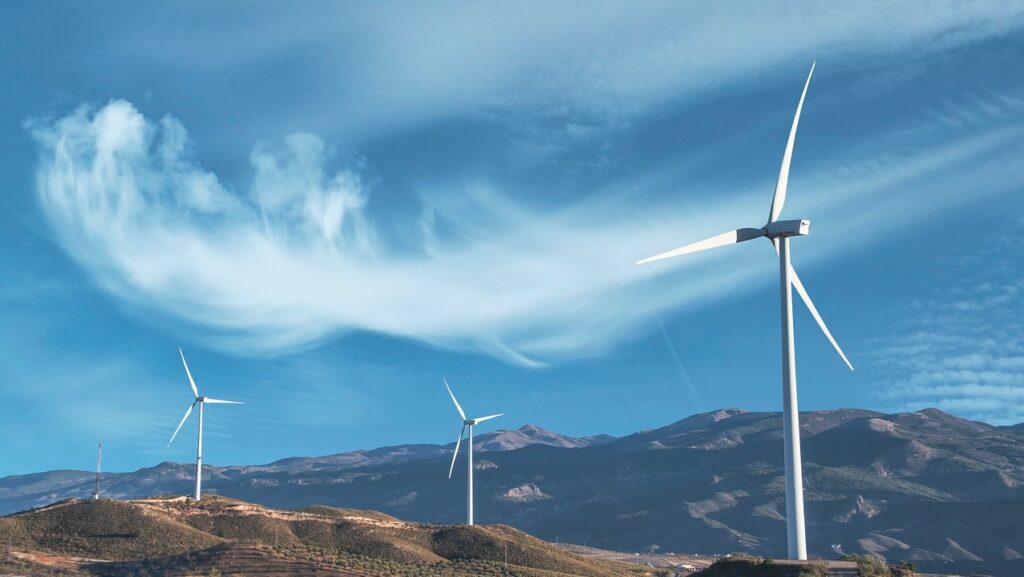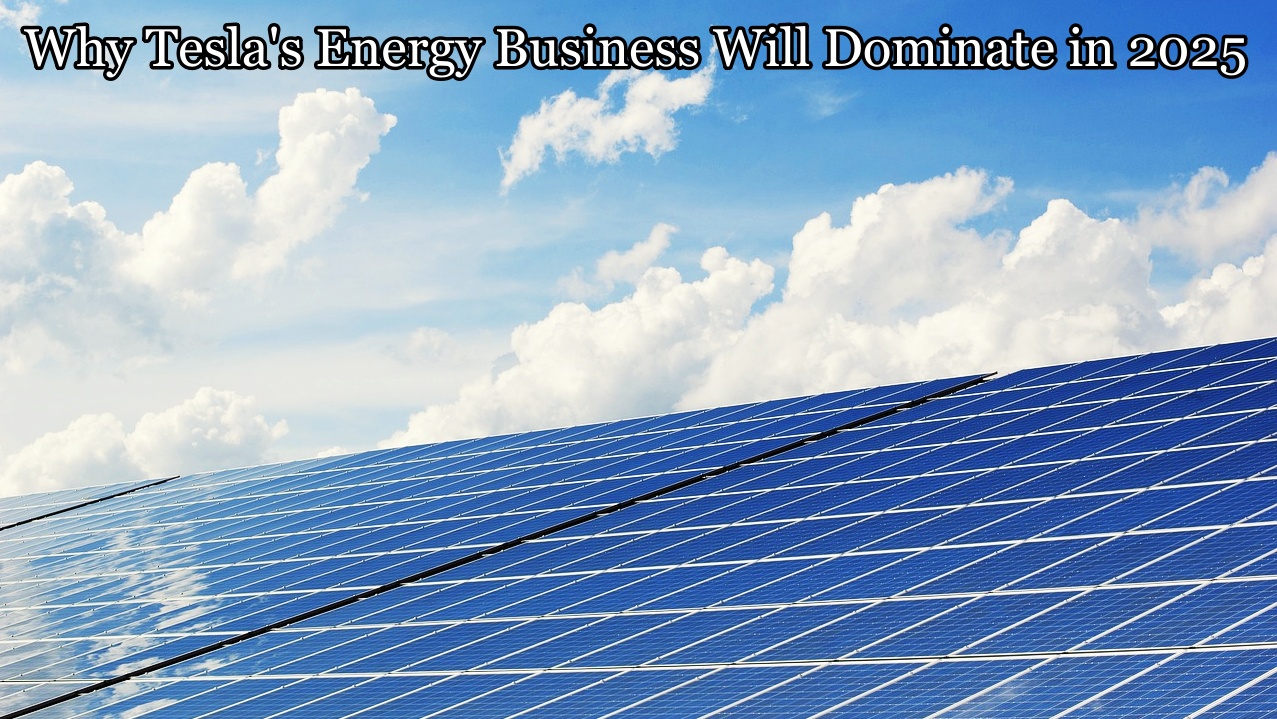For over a century, the world’s energy superpowers were built on oil. However, a new energy revolution is underway, and it’s led by none other than Tesla. While most of the world is still focused on the slowdown of car sales or factory retooling, Tesla’s energy division has quietly soared.
In 2024, the company’s energy business grew by 67%, outpacing every other division inside Tesla. This isn’t a fluke. It’s part of a much bigger shift that’s been happening in the background for years.
Tesla’s Mission: A Transition to Sustainable Energy
Tesla’s mission has always been clear: to accelerate the world’s transition to sustainable energy. For many, this mission has been synonymous with electric vehicles (EVs) – sleek, battery-powered cars that disrupted the automotive industry. But while the world was watching Tesla’s EV innovation, something equally transformative was happening in the background – Tesla was working on energy storage solutions that could revolutionize how energy is used globally.
A Growing Energy Business
For years, Tesla’s energy business was an afterthought. Its quarterly reports buried the division, and mainstream headlines focused on the latest car models or tech breakthroughs. But this narrative is changing rapidly. In 2024, Tesla’s energy division generated $10.09 billion in revenue, representing a massive 67% increase year-over-year. In fact, Tesla’s energy storage business is growing at a rate no other company in the sector can match.

Tesla’s Energy Storage Growth: A Shift to Grid-Scale Solutions
Tesla’s energy storage business is growing at an unprecedented pace. The company deployed 31.4 GWh of energy storage in 2024, more than doubling the 14.7 GWh from the previous year. For perspective, that’s enough energy to power nearly 10 million homes for an entire day. What’s even more exciting is that this growth is only the beginning.
Elon Musk has long believed that energy storage will play a pivotal role in the future of sustainable energy. Now, with Tesla expanding its production capacity, the company is pushing the boundaries of what’s possible. The future of Tesla isn’t just on the road; it’s in the power grid.
The MegaPack: The Key to Tesla’s Energy Revolution
So, how exactly is Tesla transforming the energy industry? The answer lies in Tesla’s MegaPack. Unlike Tesla’s Powerwall, which keeps the lights on for homes, the MegaPack is designed for cities, states, and even entire power grids. It’s not just a battery; it’s a power plant in a box. The MegaPack captures vast amounts of energy and stores it until it’s needed, providing a stable, reliable power source even when the sun isn’t shining or the wind isn’t blowing.
Tesla’s MegaPack is already making waves. In South Australia, Tesla built the Hornsdale Power Reserve, which was the world’s largest lithium-ion battery at the time. In 2017, the system proved its worth when it prevented a massive blackout. The MegaPack kicked in and stabilized the power grid, preventing widespread outages and proving that large-scale battery storage can work at scale.
California and Beyond: Scaling Tesla’s Energy Impact
Following the success in South Australia, Tesla deployed a 182.5 MW MegaPack system at Moss Landing in California. This project is part of a broader push to replace fossil fuels with renewable energy. As demand for electricity spikes in the evening when millions of Californians come home, the MegaPack provides the backup, pulling energy from stored solar power rather than firing up fossil-fuel plants.
Tesla’s energy division isn’t just expanding; it’s racing to meet demand. In 2024, Tesla signed a 15.3 GWh deal with Intersect Power for one of the world’s largest solar-plus-storage projects. According to Elon Musk, the demand for energy storage is “essentially unlimited”, with a future so vast that Tesla can’t scale fast enough.
Tesla’s Biggest Challenge: The Battery Supply Chain Crisis
Despite this rapid growth, Tesla faces a major challenge: securing the necessary resources for battery production. The global battery supply chain is struggling to keep up with the explosive demand for both EVs and energy storage systems. Tesla competes with itself for batteries – the same critical resources are needed for both its electric vehicles and energy storage solutions.
Lithium, nickel, and cobalt are essential materials for Tesla’s batteries, but these minerals are becoming harder to acquire. Moreover, China’s dominance over the global supply of rare earth metals poses another geopolitical risk. In December 2024, China banned the export of gallium and germanium, two essential elements for battery production, sending shockwaves throughout the industry.
Recycling: Tesla’s Answer to the Supply Crisis
To solve this issue, Tesla is focusing on battery recycling. Instead of viewing used batteries as waste, Tesla plans to recover up to 92% of critical materials like lithium, cobalt, and nickel through its in-house recycling process. This closed-loop system could change everything. Tesla wouldn’t need to mine new minerals, which would reduce geopolitical risks and supply chain bottlenecks. Instead, the company could rely on recycled materials to keep its operations running.
This recycling innovation is not only environmentally beneficial, but it’s also strategically important. Elon Musk has stated that the future of batteries will be based on a closed-loop system, which could give Tesla a huge competitive advantage in an industry that’s only going to grow in the coming decades.
The Future of Energy Storage: Tesla’s Next Trillion-Dollar Opportunity
Tesla is not just betting on energy storage; it’s betting on the future of global energy management. The global battery storage market is projected to grow at an astounding 27% annually over the next decade, with an estimated value of $1 trillion by 2030. Governments are already rolling out incentives to accelerate this transition, with the U.S. Inflation Reduction Act and the European Union both committing billions of dollars to battery storage projects.
Tesla’s Energy Business Will Surpass Its Automotive Division
Tesla’s energy division is scaling up faster than its automotive division ever did. As the world moves toward renewable energy and grid-scale storage, Tesla is positioned to lead the charge. Elon Musk has even suggested that Tesla’s energy business could eventually surpass its automotive business.
While Tesla’s cars revolutionized the way we think about transportation, the company’s true legacy might lie in its energy business. Tesla isn’t just accelerating the world’s transition to electric vehicles; it’s also accelerating the world’s transition to renewable energy. The global energy future is being built on batteries, and Tesla is at the heart of it all.
Conclusion: Tesla – The World’s Next Energy Superpower
Tesla has long been known for its groundbreaking work in the automotive world, but the future may be even brighter for its energy division. As Tesla continues to innovate in battery storage and recycling, the company is not just participating in the renewable energy revolution—it’s leading it.
If the demand for grid-scale battery storage continues to grow, Tesla could emerge as the world’s next energy superpower, powered not by oil, but by batteries. With Tesla energy scaling at an unprecedented rate, we may look back in decades and realize that Tesla wasn’t just a car company—it was the company that changed how the world uses and stores energy.
FAQ
Tesla’s energy business focuses on creating solutions for energy storage, including large-scale battery systems like the MegaPack and Powerwall. These systems store renewable energy, such as solar power, for use when needed, helping transition from fossil fuels to clean energy.
In 2024, Tesla’s energy division grew by 67%, reaching $10.09 billion in revenue. This represents one of the fastest-growing sectors of the company.
The MegaPack is a large-scale energy storage solution developed by Tesla. Unlike the Powerwall (which is for home use), the MegaPack is designed for cities and entire power grids, acting as a “power plant in a box” to store and release massive amounts of energy when needed.
Tesla’s MegaPacks have been used in various places, including South Australia and California. In South Australia, the Hornsdale Power Reserve prevented a blackout by stabilizing the grid during a power plant failure. In California, Tesla’s MegaPacks help replace fossil fuels by storing solar power to meet high energy demand during evenings.
The demand for battery storage is growing rapidly. Tesla estimates the demand is “essentially unlimited” due to the global shift toward renewable energy sources. This rapid demand is driving Tesla to expand its energy division and meet the growing need for storage systems.
Tesla faces challenges in securing enough batteries to meet the demand for both its electric vehicles (EVs) and energy storage systems. The company is competing with itself for critical materials like lithium, cobalt, and nickel, which are needed for both applications.
To solve the battery supply issue, Tesla is focusing on recycling used batteries. Tesla’s closed-loop recycling system aims to recover up to 92% of critical materials like lithium, cobalt, and nickel, reducing reliance on mining and securing a sustainable supply of resources for its future energy needs.
Tesla’s energy division is poised to become a trillion-dollar industry. As the battery storage market grows, Tesla’s advancements in grid-scale storage and recycling could revolutionize energy storage globally, making renewable energy more reliable and reducing dependence on fossil fuels.
Tesla’s energy division is growing faster than its automotive division. While EV sales are still strong, the future of Tesla is increasingly tied to energy storage, with Elon Musk predicting that the energy business could eventually surpass Tesla’s automotive business.
China plays a critical role in the global battery supply chain, processing over 80% of the world’s rare earth metals. Tesla’s reliance on lithium, nickel, and cobalt from China exposes the company to geopolitical risks, as seen when China recently banned the export of key materials like gallium and germanium.
Read More:


1 thought on “Why Tesla’s Energy Business Will Dominate in 2025”